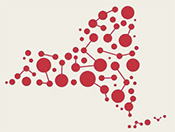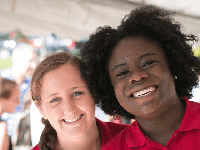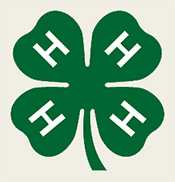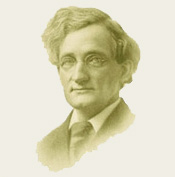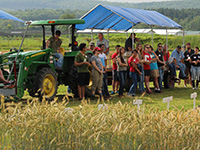Home | Unit 2
Overview
Youth will learn about characteristics of native bees, and how they compare to non-native honeybees in pollination and sustainability. By building a Bee Hotel or other nest, they will encourage native bees to nest.
Skill Level
Beginning /Intermediate Level
Learner Outcomes, Youth will:
- Identify different bees and their pollinating habits.
- Understand conserving pollinators for sustainability.
- Create an example of a habitat for bees.
Education Standards
- NS.K-4.3 Life Science: Life cycles of organisms, Organisms and environments
- NS.5-8.3 Life Science: Structure and function in living systems, Reproduction, Populations and ecosystems
Success Indicators
Building simple pollinator habitats yields positive results for the environment and food system.
Life Skills
Healthy lifestyle choices, goal setting, planning, wise use of resources, resiliency
Time Needed
One-hour, ongoing observation; two hours per year to take care of mason bee nests.
Materials List: Varies, depending on resource used to purchase Bee Nest Kits or supplies needed to build one nest per person; Journal notebooks, pen, pencils for each person.
Space
Meeting space with tabletops set up for building bee nests. Outdoor area(s) where bee nests will reside.
Suggested Group Size
12-15 or more
Acknowledgements
Veronica Kaliski, Master Gardener Volunteer, CCE Suffolk County: Action Project: “Mason Bees: Becoming a Bee Rancher”; Cornell Garden-Based Learning Library: Pollinator Protection Part 2: Habitat Establishment: Amara Dunn, NYS IPM; Mike Helms, Cornell PMEP; Beneficial Insects: Scott McArt, Assistant Professor in the Entomology Department at Cornell University, Dr. Elizabeth Lamb-NYS Integrated Pest Management Program, CALS Cornell University and CCE county educators: Pollinator Protection Part 2.
Introduction
Youth will learn about characteristics of native bees, and how they compare to non-native honeybees in pollination and sustainability. Youth will build a Bee Hotel or other nest, to encourage native bees to nest. Native bees, such as Mason bees pollinate a wide variety of plants. Unlike the Honeybee, Mason bees will fly in the cold, and are not susceptible to Colony Collapse Disorder (CCD). According to Bryan Danforth, Cornell University Entomologist, native bees are four times more effective at pollinating than “side working” honeybees. Danforth said research and fieldwork is proving wild bees can play a critical role in saving growers’ money, easing pressure on vulnerable honeybee hives, and increasing sustainability.
http://www.cornell.edu/video/cornell-orchards-wild-bee-pollination
Opening Questions
What do you know about bees? How are bees important in sustaining our food system?
Background Information
Before the Activity
Explore the Resources and Kits for Bee Hotels and Nests section to find where to purchase kits and/or cocoons or information on how-to build bee nests. Choose a resource that best fits your group’s skills, budget and interest. Purchase and/or gather material to build a bee hotel or nest, one for each child. Optional: If your group wishes to join, review the Native Bee Network and 4-H, Native Bee Challenge and prepare materials and activity steps. Invite a local Native Beekeeper or expert in the field.
Let’s Do It!
Introduction
Hand out one Journal notebooks, pen, pencils for each participant to personalize and record observations and notes. Invite a local beekeeper or expert or be prepared to introduce the characteristics of mason and wild bees. Watch the Mason Bee presentation as a group and discuss characteristics and tasks.
Characteristics of Mason Bees
How can you tell the difference between mason bees vs. honeybees, bumble bees and flies?
- solitary bees
- no queen, and no hive
- no “division of labor”, all females are fertile
- docile and rarely sting
- live in pre-existing sites such as hollow reeds or nail or beetle holes
- rarely fly more than 300 feet from their nests
- do not make honey
- thrive on fruit trees, berries, trees, shrubs, dandelions and clover – they are early spring pollinators
- will fly in the cold
Pick a spot
Find a place for each Bee Nest, such as the edge of a garden, close to flowers that mason bees pollinate and facing the sun. Avoid pesticides.
Build a nest
Following guidelines steps on how-to build a bee nest, following the resource you found in the Resources and Kits for Bee Hotels and Nests section, and place the nest(s) in the desired location.
Ongoing
Observe and do seasonal “chores”. Have participants record tasks and observations in their Bee-Rancher Journals.
What are the bees are doing in spring?
- The male bee cocoon, which is smaller, hatches first. The males wait for the females which can take up to two weeks. After mating the male dies.
- The female forages for pollen. She puts pollen and nectar in the nesting cavity, lays an egg, and seals off the cell with mud.
- She continues doing this until the chamber is full, then goes on to another tube. Females lay approximately 15-20 eggs.
- She makes 11-35 foraging trips to collect enough pollen and nectar for one baby bee.
- After approximately 6-8 weeks, the female dies.
Spring Chores
- Put mason bee house where it faces the morning sun. Put the house at eye level.
- Holes should be 8 mm in diameter.
- General rule is put the cocoons out when it is 50-55 degrees for three consecutive days; do not worry about nighttime temperatures.
- Put the cocoons on top of or behind nesting holes – you can put them in a small paper cup.
Provide approximately one nesting hole for each cocoon. - Generally, you want 6 males to 4 females.
- Make sure emerging bees have enough to eat – within 300 feet of flowers.
Provide mud- females separate the cocoons and cap the tubes with mud, hence the name “mason”. Put chicken wire in front of nesting holes, to keep out birds; do not but your bees near a bird feeder.
What are the bees are doing in summer?
- The larva hatch and eat the food.
- After 10 days they spin a cocoon then pupate.
- They are at this point fully formed bees which will emerge the following spring.
Summer Chores
Leave the reeds in place outside but put them in a mesh bag which guards them against wasps and other pests which may invade the cocoons.
Keep doing chores!
Autumn Chores
- It is now time to harvest the cocoons – (October to December). Handle the cocoons gently but remember that they are waterproof. Open the nesting tubes – you will see the cocoons, the frass (larva excrement) and the mud partitions.
- Using something flat (a nail file, flat screwdriver) remove the cocoons to a shallow dish.
- Discard cocoons that have small holes in them (caused by mini wasps).
- Clean the cocoons in 0.05 bleach solution (1 T of bleach to 8 cups of cool water). After one to two minutes, rinse the cocoons in cool water.
- Roll them gently in a towel to dry.
- Your cocoons are ready for winter storage!
Winter Chores
- Put the cocoons in a ventilated container such as a Humidibee. Keep the container in the refrigerator, in a crisper (39-40 degrees F, with 50-75% humidity).
- Do not keep apples in the same crisper – the ethylene gas will kill the bees.
- Keeping the bees in the refrigerator protects the bees from predators and from fluctuations in temperature.
- Check the container every few weeks to make sure that the pad below the foam is damp. Add water as necessary – usually 1 T a month.
- If cocoons get moldy, put them in a paper bag and close the top (mold spores have a harder time penetrating the paper bag).
Talk It Over
Share
Participants demonstrate their completed nests share with the whole group and describe where they will be placed and why they chose that location. Share any observations made in the Journals while doing this activity.
Reflect
Ask: Can you think of ways that would keep bees going as pollinators? Why is this important? Review the Pollinators Q&A in the handouts.
Apply
Have your group plan to do seasonal tasks on the “To Do List” (chores).
References
- CALS Notes, Leap of faith by Cornell proves pollination can be honeybee free
- CORNELL CHRONICLE, Cornell orchards rely on wild bees, JUNE 4, 2015
- Crown Bees
- Cornell Garden-Based Learning Library: Pollinator Protection Part 2: Habitat Establishment, contributors: Amara Dunn, NYS IPM; Mike Helms, Cornell PMEP; Beneficial Insects: Scott McArt, Assistant Professor in the Entomology Department at Cornell University, Dr. Elizabeth Lamb-NYS Integrated Pest Management Program, CALS Cornell University and CCE county educators.Reviewer(s): Fiona Doherty, Anne Christian-Reuter and Donna Alese Cooke
Learn More
Resources and Kits for Bee Hotels and Nests
- 4-H Beekeeping
- National Geographic, Build Your Own Bee Hotel
- Michigan State University, Building and managingBee Hotels for Wild Bees
- University of Nebraska, Creating a Solitary Bee Hotel
- Danforth Lab, Cornell University
- Join the Native Bee Network and 4H, Crown Bees, The Native Bee Experts.
- Shop 4-H: Honey Bee Challenge Kit
Pollinator Observations
- Bumblebee Watch
- Create a Pollinator Paradise, CCE Putnam
- The Great Sunflower Project
- Master Beekeeper Program
- Million Pollinator Challenge
- Monarch Net
- National Agriculture in the Classroom, search for lessons relating to the topic: e-Learning Resources and Agricultural Literacy Curriculum Matrix
- Native Beeology:Native Bee Field Guide
- Northeast Pollinator Partnership
- NY Wild Bee Guide
- NYS IPM Pollinator Page
- Pollinator Network @ Cornell
Plant Lists by Region
- Plant Lists and Backyard Practices: Xerxes Society Backyard Pollinator Habitat
- Plant Lists and Backyard Practices: Pollinator Partnership
- Pollinator Partnership, Ecoregional Planting Guides
- Pollinator Watch: pollinatorwatch.org
- PDF Booklet: How to protect and increase pollinators in your landscape
- Smart Lawns for Pollinators: Michigan State U Extension
- USDA Natural Resources Conservation Service, How Gardeners can help pollinators
- US Forest Service: Pollinator of the Month, Mason Bees
- Yard Maps
Pollinators and Climate Change
- Cornell Ornithology Lab, project feederwatch.
- World Wildlife Fund, Monarch Butterfly Report, 2015
- Timing, Pollinators, and Impact of Climate Change: Blog post Union of Concerned Scientists, 2017
- Endangered Species Coalition: How Climate Change has Affected Pollinators, 2018.
- Entomology Today: pollinator hotels, ecological and educational value.
- Mother Nature Network: Build a hotel for wild bees.

